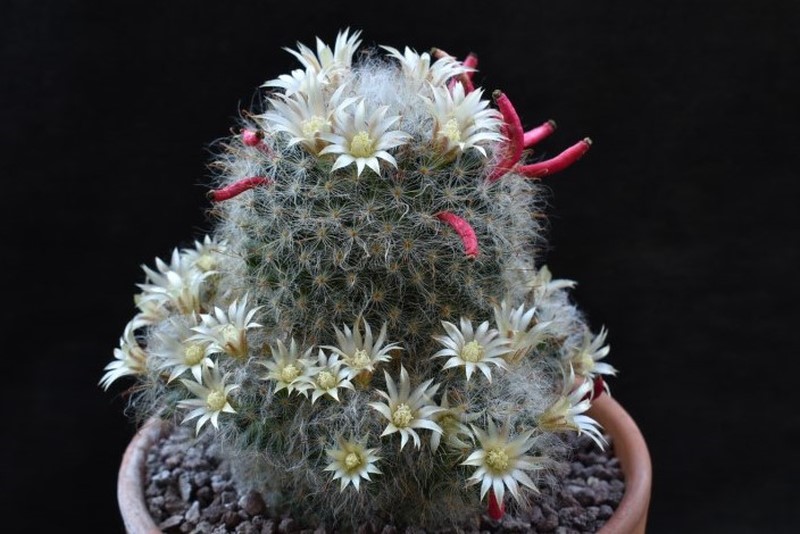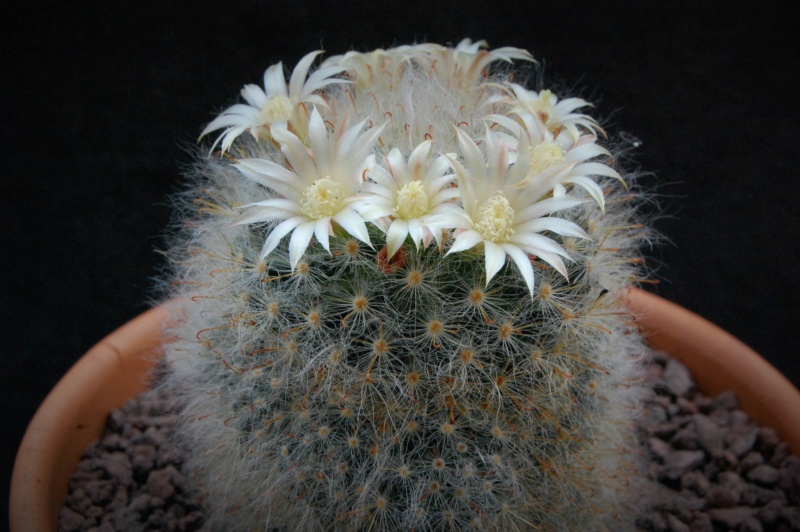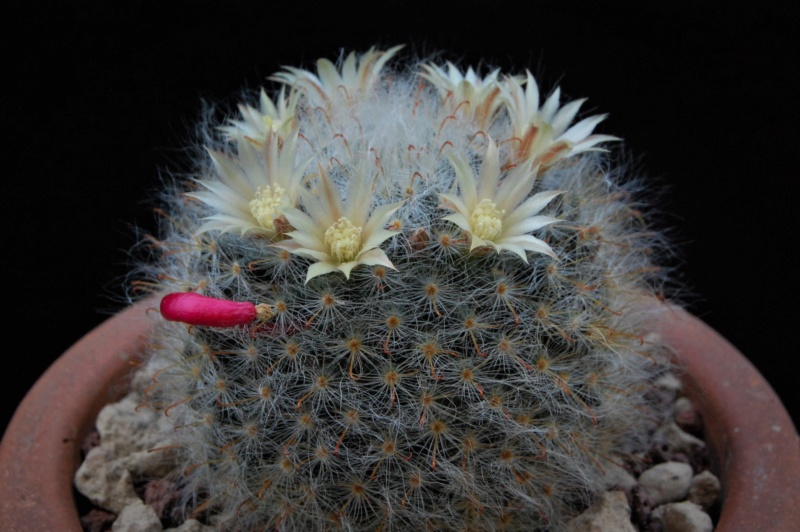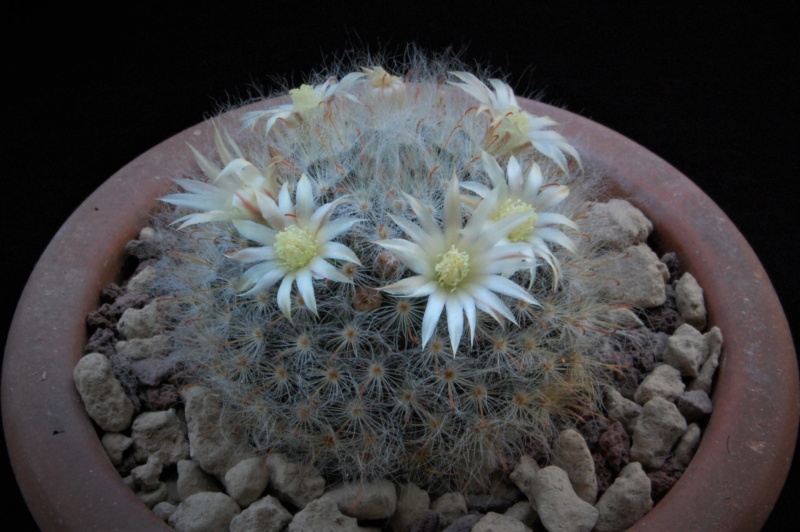Mammillaria bocasana (Poselger)
Body: Simple and caespitose, forming large mounds, globose, becoming cylindric, 4 - 5 cm. wide.
Tubercles: Arranged in 8 and 13 spirals, flabby in texture, light to dark bluish green, slender, cylindric to somewhat conic, terete, with
watery sap, 6 - 10 mm. long, 2 - 4 mm. wide at base.
Arcoles: Oval to round with scant yellowish woolly felt. Axils naked.
Central Spines: 1 (2 - 3), 5 - 8 mm. long, thin, acicular, pubescent, lower hooked, upper straight, all yellowish brown, darker at apex, lower porrect, upper nearly radial.
Radial Spines: 25- 30, 8 - 20 mm. long, very fine hair-like, tortuous, smooth, at first ascending, later nearly horizontal, interlacing.
Flowers: Funnelform, tube as long as tubercles, 16 mm, long, 12 mm. wide. Outer perianth segments, green base, light reddish-brown ventral midstripe, greenish yellow margins, lanceolate, tip acute, margins entire. Inner perianth segments, yellow, light reddish brown midline and point, linear-lanceolate, tip acute to obtuse, margins entire.
Filaments: White to pale yellow or to pale rose above.
Anthers: yellow.
Style: Pale yellow. Stigma lobes four light green, level with anthers.
Fruit: red, slender clavate. Seeds: few, black, broad obovate with narrow basal hilum small.
Type locality: Sierra de Bocas, Mexico.
Distributions San Lais Potosi, Mexico.
Mammillaria bocasana WTH 599
WTH 599 - Under bushes at the foot of a hill to the east of Derramaderos - San Luis Potosi - Mexico







